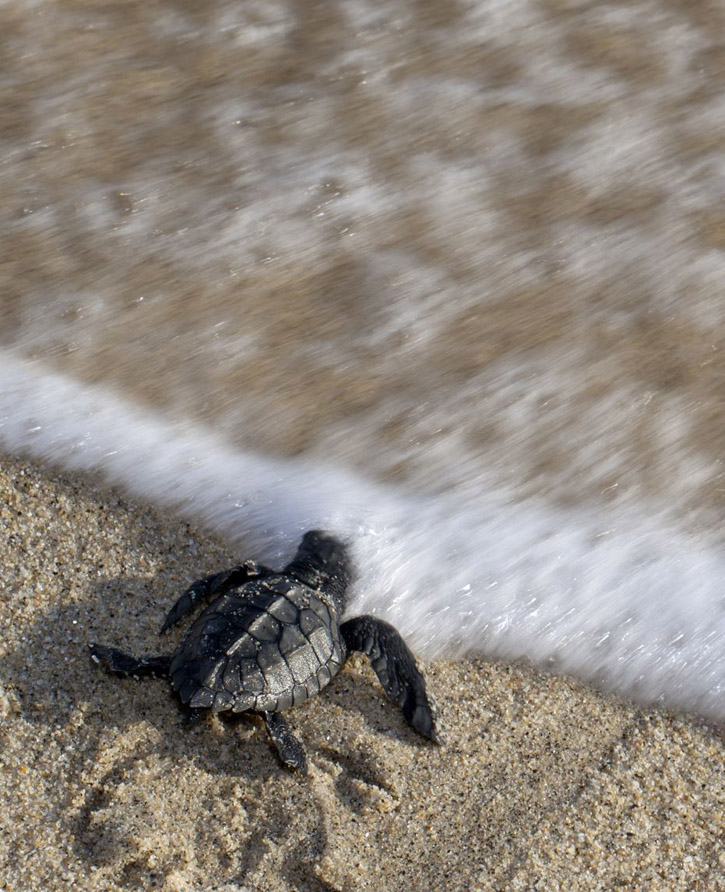From August until December, female olive Ridley sea turtles return to the beaches of the area (to the same spot where they were born) to lay up to 80 eggs. Around 40-60 days later, these eggs hatch, and baby turtles are born. At the Estación Septiembre Sea Turtle Hatchery and Release Program (Playa La Cuevita, 5 km south of El Valle, cell tel. 314/677-2488 or 314/675-3353), turtle eggs are collected from the beaches and protected from stray dogs, birds, and from humans. They remain in the sand until baby turtles are born. Then they are released into the ocean.

A baby olive Ridley sea turtle (Lepidochelys olivacea), also known as the Pacific Ridley, reaching the water for the first time. Photo © Anthony Totah/123rf.
A highlight of your visit to the Pacific coast might be witnessing a release of fearless newborn turtles as they scamper their way into the water.This program is run by the Fundación Natura and administered by the community-based organization the Fundación Caguama. (Caguama means sea turtle in the Emberá language.)There are two ways to see this important work at the Estación Septiembre. You can visit for the day. (It’s best to contact them in advance so they can coordinate your visit.) They request a small donation of perhaps COP$5,000. Or you can stay at one of the three simple rooms at the Estación Septiembre (Fundación Natura in Bogotá, Cra. 21 No. 39-43, tel. 1/245-5700, COP$60,000 pp all meals incl.).
A highlight of your visit to the Pacific coast might be witnessing a release of fearless newborn turtles as they scamper their way into the water. These take place at the Estación Septiembre, especially during the month of September.
Excerpted from the First Edition of Moon Colombia.